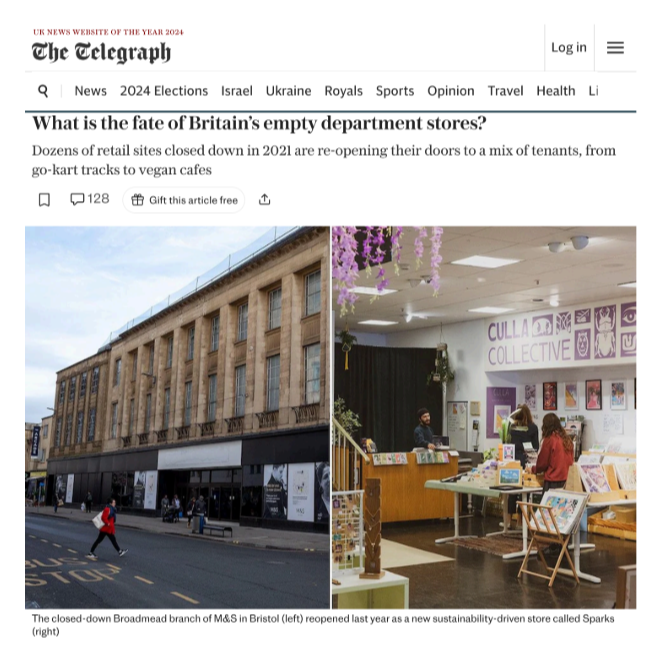What Is The Fate Of Britain’s Empty Department Stores?
“It’s like a little neighbourhood in here.” Journalist Simon Usborne visited Sparks Bristol for The Telegraph researching the reasons why so many high street department stores are standing empty and what lies ahead for these “cathedrals of commerce”.
“Sixteen months after the last bras and Percy Pigs went through the old tills, the M&S on Broadmead reopened, in May last year, as Sparks Bristol, which bills itself as “the department store with a difference”. Stretching across a ground floor could easily contain a dozen tennis courts, Sparks includes sections selling everything from vegan brownies at the little cafe to lampshades in the gift shop and vintage clothes at the “department of fashion”, where six traders have joined forces as a social enterprise.
Two Bristol charities came together to launch Sparks to serve the community, support independent retailers, and promote sustainability causes. The cafe is vegan and the furniture has been saved from landfill, including pews from Bristol Cathedral and doors from an old Crystal Maze TV set. It’s also a fun, welcoming space that wears its ethical mission lightly. On weekends, “Sparklers” dressed as bellboys welcome visitors. There are places to sit, and to get clothes and toasters repaired, alongside installations promoting green energy and transport. Studios, workspaces and meeting rooms occupy the upper floors. When I look around, a pilates class is taking place in the old linger section.
“People used to go to these stores to have chats, and I think we have missed that connection from the high street,” says Kathryn Chiswell Jones, who runs Artspace Lifespace, one of the charities behind the store. It has created studios, galleries and performance spaces in abandoned buildings as diverse as a police station and an Audi showroom.”
